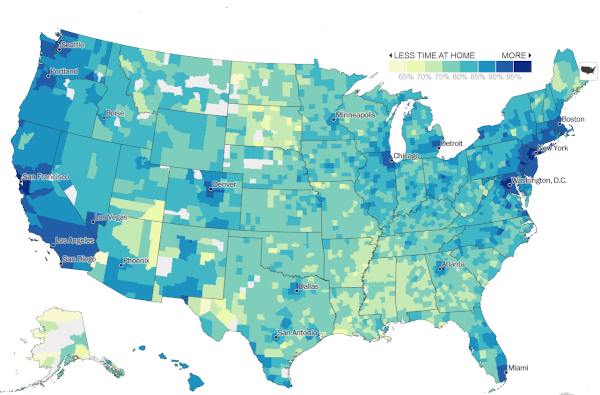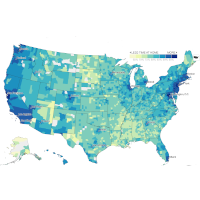Americans are getting a burger and a haircut — but not dinner and a movie
— from Washington Post —
Every state and most counties have loosened stay-at-home restrictions at least a little, and U.S. residents appear to be venturing out with varying degrees of caution.
In and around the nation’s densest cities, people are spending almost as much time at home as they were at the height of the stay-home peak around April 7, according to a Washington Post analysis of data provided by SafeGraph, a company that aggregates cellphone location information.

Elsewhere, particularly in pockets of the Upper Midwest and the South, people are spending less time at home now than they did before the arrival of widespread restrictions (and, for many, before the arrival of spring weather). These also tend to be areas where officials were early to roll back stay-home restrictions.
To determine when people are home, SafeGraph obtains GPS data through regular pings from smartphones that are running one or more apps from an undisclosed list. The company defines “home” as a common location from which a phone pings between 6 p.m. and 7 a.m.
And by detecting pings that come from phones that are within the footprints of buildings, the company can estimate foot traffic in a place of business or worship.
The data is not perfect, but it is a good indicator of where people are going.
READ FULL ARTICLE
**If you are reading theOrcasonian for free, thank your fellow islanders. If you would like to support theOrcasonian CLICK HERE to set your modestly-priced, voluntary subscription. Otherwise, no worries; we’re happy to share with you.**








